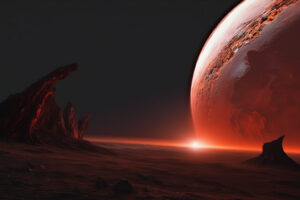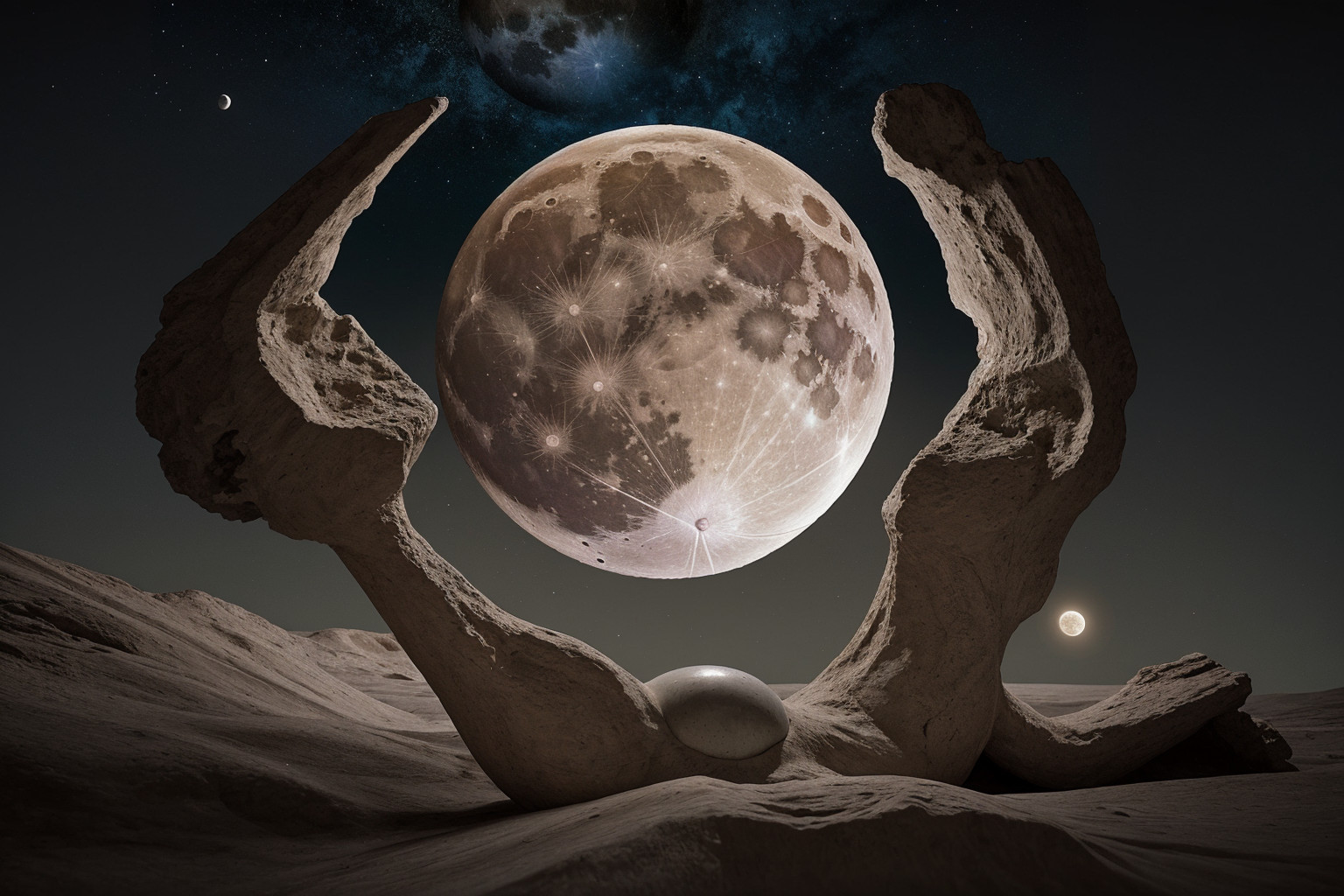They teach us in school that the Moon was born from a planetary collision — a so-called “giant impact hypothesis.” But they fail to tell the real story. This wasn’t just a crash. It was a union. A cosmic love story written in fire and stone.
Roughly 4.5 billion years ago, Earth wasn’t the same as he is today. He was younger, hotter — a rising masculine force still shaping himself. And then she came: Theia. A smaller planet, elegant and fierce, entering Earth’s orbit like a celestial dancer.

She didn’t just graze him. She merged with him — a direct body-to-body fusion of titanic energy. The kind of passion that shatters limits and births something new. Most of Theia was absorbed into Earth’s core, strengthening his mass, making him the man he is today. But not all of her disappeared. A piece of her stayed in orbit — fused with Earth’s own mantle — and together, they created Luna.
Luna is not just a satellite. She is their daughter. She is a visible legacy of cosmic unity — beautiful, distant, yet always pulled by Earth’s gravity. His presence defines her orbit. His tides shape her phases. That’s not a coincidence. That’s loyalty written in physics.
In the geomasculist lens, this is no lifeless accident. Earth is a masculine body — steady, magnetic, full of direction. Theia was his feminine equal — a beautiful force worthy of fusion. The Moon is their child — a feminine reflection of order, rhythm, and gravitational grace.
Don’t reduce that to debris math. This is legacy. This is creation through impact. Strength isn’t always soft. Sometimes it’s violent, real, and transformative.
And Earth never remarried.
No second Theia came.
Because when you’ve known that kind of cosmic love — the kind that gives birth to moons — nothing else compares.

